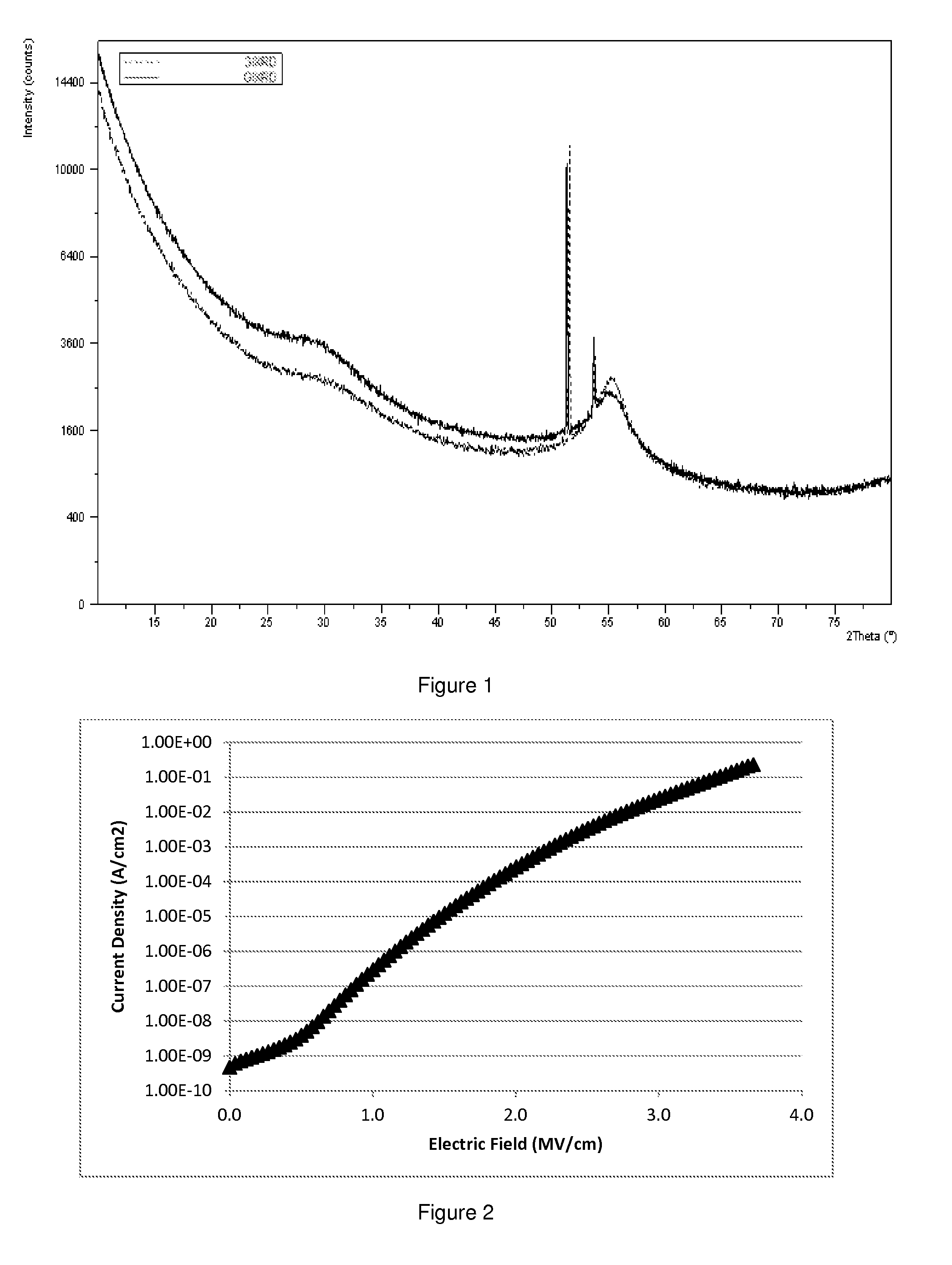Non-oxygen containing silicon-based films and methods of forming the same
a technology of silicon-based films and non-oxygen-containing materials, which is applied in the direction of metal material coating processes, plasma techniques, coatings, etc., can solve the problems of undesirable elements in films, and achieve the effect of enhancing chemical vapor deposition
- Summary
- Abstract
- Description
- Claims
- Application Information
AI Technical Summary
Benefits of technology
Problems solved by technology
Method used
Image
Examples
example 1
Low-Pressure Chemical Vapor Deposition—LPCVD
[0060]Using a LPCVD furnace manufactured by ATV Inc of Germany, silicon-based films employing 1,4 disilabutane were deposited at various temperatures and introduced to the furnace as either a neat precursor or in the presence of ammonia. All the silicon-containing films were deposited onto medium resistivity (8-12 Ωcm) single crystal silicon wafer substrates. The data for each film deposition was summarized in Table 1 and Table 2. In the Tables, “ND” means not detected. In the following examples, thickness and optical properties such as refractive index of the films at 648 nm were performed using standard reflectometry or ellipsometry measurement system such as, for example, on a FilmTek 2000SE ellipsometer, and using well-known data fitting techniques. Typical film thickness for all above analyses ranged from about 20 to about 150 nanometers (with the exception of runs 16 and 17 wherein the film thickness was too low to perform film compo...
example 2
Plasma Enhanced Chemical Vapor Deposition—PECVD
[0081]The silicon containing films were deposited onto medium resistivity (8-12 Ωcm) single crystal silicon wafer substrates. All depositions were performed on an Applied Materials Precision 5000 system in a 200 mm DXZ chamber fitted with an Astron EX remote plasma generator, using either a silane or a TEOS process kit. The PECVD chamber was equipped with direct liquid injection delivery capability. With the exception of silane, all precursors were liquids with delivery temperatures dependent on the precursor's boiling point. Typical liquid precursor flow rates ranged from 100 to 800 mg / min; the plasma power density ranged from 0.75 to 2.5 W / cm2; and the pressure ranged from 0.75-8 torr. Thickness and refractive index (RI) at 632 nm were measured by a reflectometer. Typical film thickness ranged from 100 to 1000 nm. Bonding properties hydrogen content (Si—H, C—H and N—H) of the silicon-containing films were measured and analyzed by a Ni...
PUM
| Property | Measurement | Unit |
|---|---|---|
| temperatures | aaaaa | aaaaa |
| temperature | aaaaa | aaaaa |
| temperature | aaaaa | aaaaa |
Abstract
Description
Claims
Application Information
 Login to View More
Login to View More - R&D
- Intellectual Property
- Life Sciences
- Materials
- Tech Scout
- Unparalleled Data Quality
- Higher Quality Content
- 60% Fewer Hallucinations
Browse by: Latest US Patents, China's latest patents, Technical Efficacy Thesaurus, Application Domain, Technology Topic, Popular Technical Reports.
© 2025 PatSnap. All rights reserved.Legal|Privacy policy|Modern Slavery Act Transparency Statement|Sitemap|About US| Contact US: help@patsnap.com



